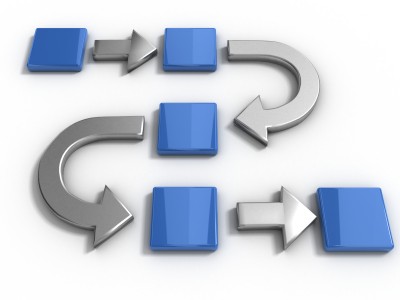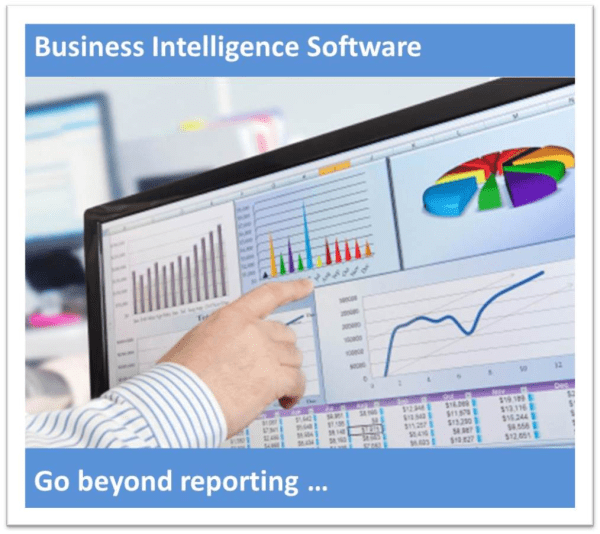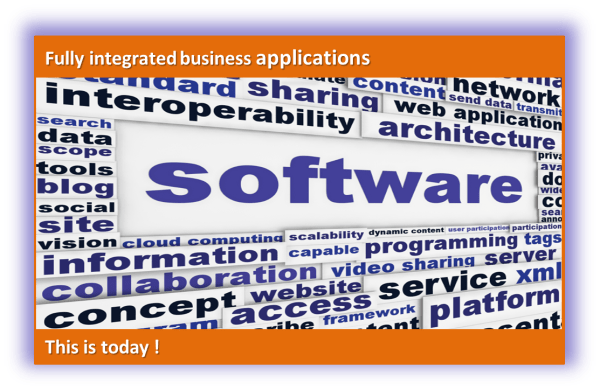 We’ve seen many companies go through software transformations. Either they are upgrading their current system or implementing an entirely new and improved solution. Either way, when employees hear that their current system is changing, they panic, before they even get a chance to see or try the new system. Unfortunately, this happens all too often and can cause implementation projects to take longer than originally planned. The users are of course an important and necessary part to any software implementation process. Without their open-mindedness and willingness to learn the new system, this project can either fail or be a major headache for everyone involved.
We’ve seen many companies go through software transformations. Either they are upgrading their current system or implementing an entirely new and improved solution. Either way, when employees hear that their current system is changing, they panic, before they even get a chance to see or try the new system. Unfortunately, this happens all too often and can cause implementation projects to take longer than originally planned. The users are of course an important and necessary part to any software implementation process. Without their open-mindedness and willingness to learn the new system, this project can either fail or be a major headache for everyone involved.
Posts
 I’m sure we’ve all wondered how nice it would be to work from home. No trudging to work in cramped spaces on public transit or in blizzards or being stuck in bumper-to-bumper traffic. In recent years however, this dream has quickly become a reality.
I’m sure we’ve all wondered how nice it would be to work from home. No trudging to work in cramped spaces on public transit or in blizzards or being stuck in bumper-to-bumper traffic. In recent years however, this dream has quickly become a reality.
It’s difficult for many business executives to find the time to begin new projects, especially when it entails implementing a new ERP software solution. Of course, this kind of project takes a lot of planning, researching, overseeing, training and so forth. However, it doesn’t have to be quite so time-consuming if the right IT provider is chosen and a solid plan of action is set in place beforehand.
Here is a quick checklist that can help in a successful software implementation project:

Today’s erpWizard guide is all about the GL Module. As it is an extensive module in our fully integrated ERP software solution, it has been broken down into four parts. Today’s article features the first section where I will go on to explain how to setup your GL Periods, GL Accounts and Company Departments.
When an executive is faced with the decision to either change their existing business system or adopt their first solution, in the case of a start-up, there are many questions that surface. The main ones however are of course, ‘What type of business management system should I adopt for my company?’ ‘What is the right system to run my business: is it an off-the-shelf packaged application or a fully integrated software solution?’ Read more
In this article, I would like to address the issue of implementing a new business software solution within a small and mid-size enterprise. This is an important topic and concern raised by executives and owners of SMEs, who are thinking of upgrading or converting their existing software systems. We see this quite often as there are always changes in industry regulations and business partners’ requirements as well as businesses looking to improve their processes and rules.
 As many executives have gone through long and painful software systems’ implementations in the past, I understand that their questions and concerns are quite valid. This is why I would like to shed some light on approaches and tips to consider when making a decision, in order to avoid the complexities and high expenses that come with a migration to a new software program (or ERP) to run the enterprise. Read more
As many executives have gone through long and painful software systems’ implementations in the past, I understand that their questions and concerns are quite valid. This is why I would like to shed some light on approaches and tips to consider when making a decision, in order to avoid the complexities and high expenses that come with a migration to a new software program (or ERP) to run the enterprise. Read more
This post was updated to reflect current trends and information.
Analytics, KPIs vs. Reports
Employing some form of analytics to track company’s performance is more important than ever before, given the increasing competition in even the newly-realized platforms for business expansion – such as the mobile space.
Key Performance Indicators (KPIs) should be well-managed and easily-defined, so that the path to enhancing your business results is painless and adaptable to the changing times.
This is precisely where capable business intelligence software comes in. More than merely delivering accurate earnings reports, enterprise resource planning should entail automation of tasks, have wide applicability to multiple manufacturing and distribution industries, be affordable, and more. These attributes enable the SMB to concentrate on the business of running the company, without breaking the bank or sacrificing quality for cost.
As business intelligence software in the affordable SaaS model, erpwizard is at the front of the class for accomplishing all of these objectives, and it has a constellation of add-ons that ensure your business is ready to meet the challenges in any niche. Read more
This post was updated to reflect current trends and information.
Heteregonous Business Applications

In the recent past, the norm for a company that wanted to automate its financial and accounting processes was to employ several software business applications for the job. You would have one for manufacturing; another – often from an entirely different software company – for distribution, and so on. This led to the accepted standard of needing an in-house business software application team to oversee the collection of tools, and solve unique tech problems that often arose from the instability of such systems.
Introduction
 In today’s extremely competitive business marketplace, the efficiency gained by implementing a sufficiently robust enterprise resource planning software solution to link aspects of your network together cannot be overlooked.
In today’s extremely competitive business marketplace, the efficiency gained by implementing a sufficiently robust enterprise resource planning software solution to link aspects of your network together cannot be overlooked.
Although the ROI tends to be considerably higher after a company uses an ERP to streamline and automate all aspects of its business, the initial costs associated with acquiring the kind of ERP solutions used by large corporations can be prohibitively expensive for the smaller business – which has a much smaller margin of error in an ERP cost benefit analysis. It is because of this expense, and the need to find solutions for SMBs, that there exists ERP software that conforms to the SaaS paradigm. With this in mind, SMBs can now more accurately assess several attributes of low cost ERP solutions:
CONTACT US
400 Blvd Curé-Labelle, #304 Laval QC H7V 2S7 Canada
Phone: +1 450-681-3009
Email: support@namtek.ca
Website: https://www.namtek.ca/
Latest Blog Posts
 The Complete Guide to Grants Management Software: From Features to SelectionMarch 17, 2025 - 5:37 pm
The Complete Guide to Grants Management Software: From Features to SelectionMarch 17, 2025 - 5:37 pm AMFQ IT Modernization Case Study: Upgrading Legacy Systems with Magic xpaFebruary 27, 2025 - 8:10 pm
AMFQ IT Modernization Case Study: Upgrading Legacy Systems with Magic xpaFebruary 27, 2025 - 8:10 pm Public vs. Private Cloud Hosting: Key Differences and Benefits for BusinessesJanuary 6, 2025 - 9:12 pm
Public vs. Private Cloud Hosting: Key Differences and Benefits for BusinessesJanuary 6, 2025 - 9:12 pm
NEWSLETTER
Subscribe today to our Newsletter in order to stay up-to-date with all company news and events.

